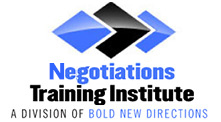The role of psychology in negotiation is fascinating. Understanding how the human brain works can provide useful insights into predicting our behaviors. Humans experience a variety of emotions throughout the negotiation process and understanding what causes these emotions is important in learning how to master the art of negotiation.
Believe it or not, when we make decisions, we are not always in charge. We can act impulsively, deliberately, or emotionally. The more scientists have studied the human brain, the more it becomes clear that different parts of our brain collaborate and compete when we make decisions. While there is no specific formula for making good decisions, the more we understand about how decisions are made, the better we can manage them.
The Role of Cortisol
Cortisol is a steroid hormone that the body produces in reaction to stressful situations. It is often known as the body’s “flight or fight” response. When you or the other person in a negotiation begins to feel stressed or frustrated during the discussion, this means there is a heightened level of cortisol. This causes us to move into a more emotional state and can cloud our thinking. When this happens, it is important to deescalate the situation by acknowledging the emotions, offering compassion, and engaging in problem-solving tactics.
What is Happening in the Brain
When a person receives an offer during a negotiation, it fires the dorsolateral prefrontal cortex. This part of the brain is responsible for making us self-aware and gives us the ability to reflect on the information that has been presented to us. It is the part of the brain that allows us to solve complex problems, which is why it activates when we are presented with an important financial decision.
If an unsettling offer is made, another part of the brain, the anterior insular cortex, is activated. This is the region of the brain that is responsible for our emotions, allowing us to feel pain and anxiety. When you get that ‘gut feeling’ that something isn’t right, you can thank this part of the brain for your body’s response.
When you are presented with an offer during a negotiation, these different parts of the brain begin communicating and conferring with each other allowing you to assess the situation. In other words, your emotional wing and your logical reasoning wing arecompeting with each other. Do you fight back with a better offer or take the deal even though it’s not what you wanted? When one side of the brain is more active, we tend to make a decision based on either logic or emotion. The decision-making process in the brain is quite complex, but the more we learn about the brain science of motivation, the more we can learn to become effective negotiators.
